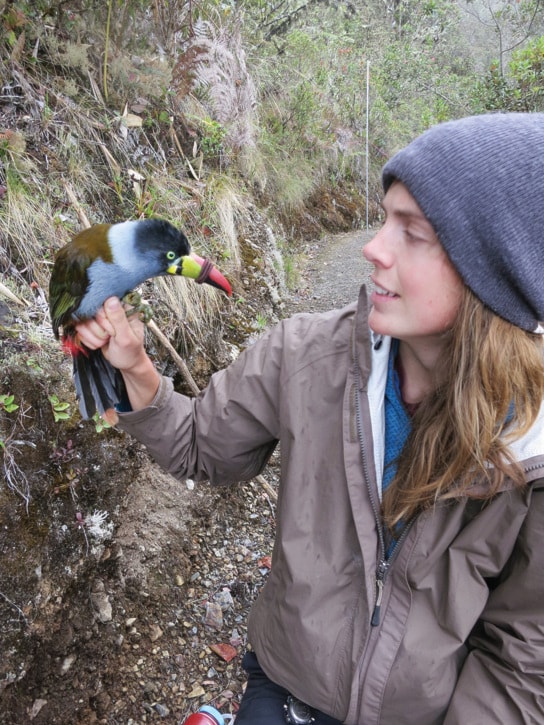Stephanie Cavaghan is used to working with her head in the clouds.
The UBC science graduate spent four months banding birds at Waqucha Station at 2,800 metres in Manu National Park in Peru and will share her experiences and photos at the art gallery on Saturday.
There are three stations in Manu Park, with the highest where Cavaghan worked appropriately called the Cloud Forest.
One part of the project that involves scientists from around the world includes catching birds and monitoring their oxygen consumption over different temperatures to find out what their biological restrictions are – as in, why they live where they do?
A second study included finding and monitoring how many eggs were in the nest, how long they took to hatch, were they predated and when the birds fledged.
Cavaghan’s assignment included catching and banding birds and taking parasite and feather samples in a project has been going on for seven years.
Camp neighbours included a puma and a few spectacle bears and, much to Cavaghan’s delight, the capturing of some Swainson thrushes, the tiny birds that got her hooked on birds and their travels.
“It was neat to see where they show up,” says Cavaghan of the birds, some of which had already been banded.
The thrushes head north from May through June and return to their wintering grounds sometime in late summer through September.
These tiny birds that weigh about 25 to 30 grams and travel about 4,000 to 5,00 kilometres to get to their breeding grounds in B.C. from their Central American winter homes. They average approximately 300 to 450 kilometres per day.
The findings are the result of a study Cavaghan worked on with a PhD student, who presented her report in 2012.
Cavaghan says the study proved what had long been suspected, that there was a migratory divide among the thrushes, with those in the Interior heading east before going south and a coastal species flying south along the coast.
Further banding experience came at Kananaskis, Alta. where Cavaghan made contact that led her to Manu Park.
Cavaghan shares her experience with the unique research work at 7 p.m. Saturday, March 15 at the art gallery.
Admission is by donation.
